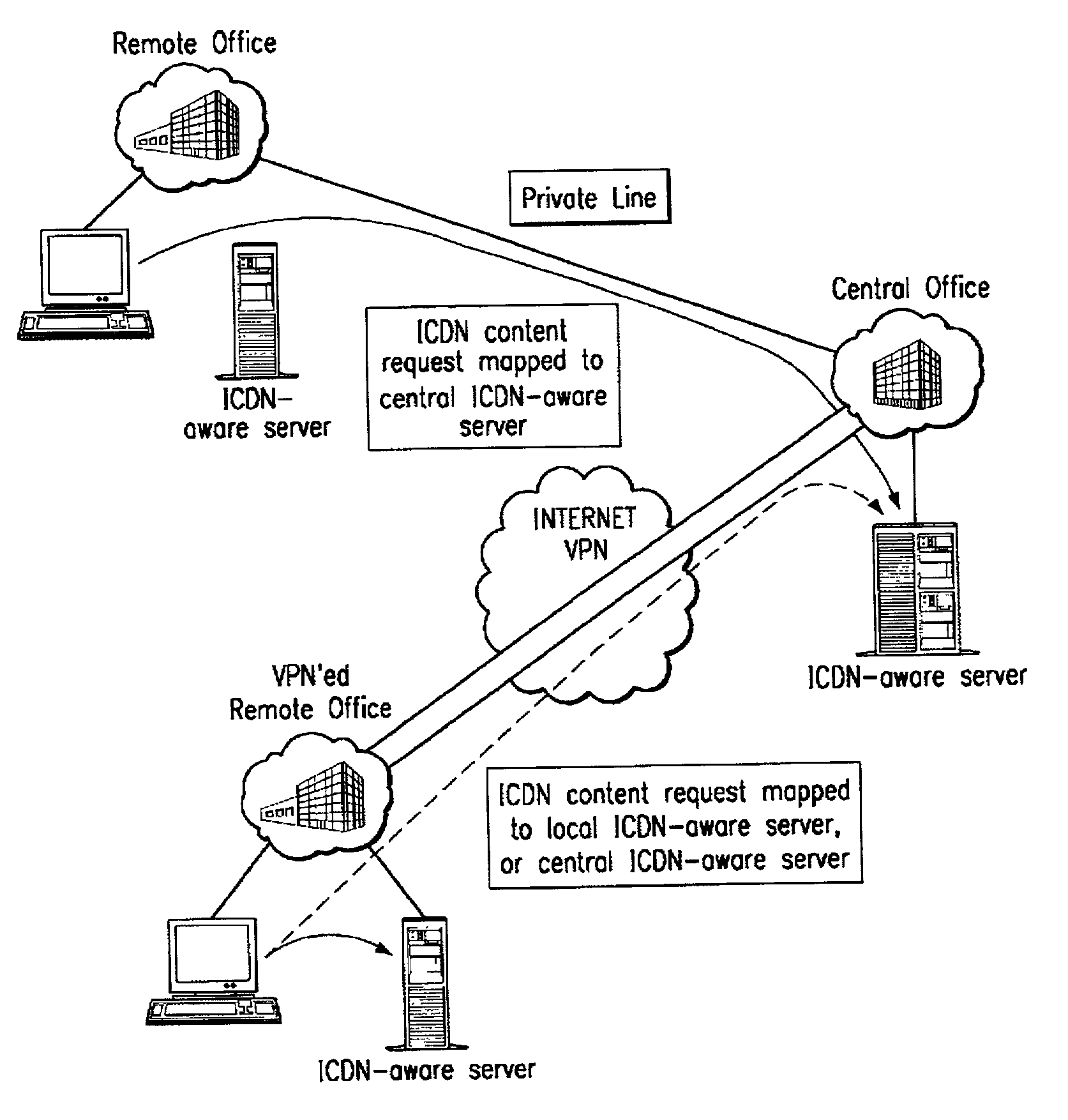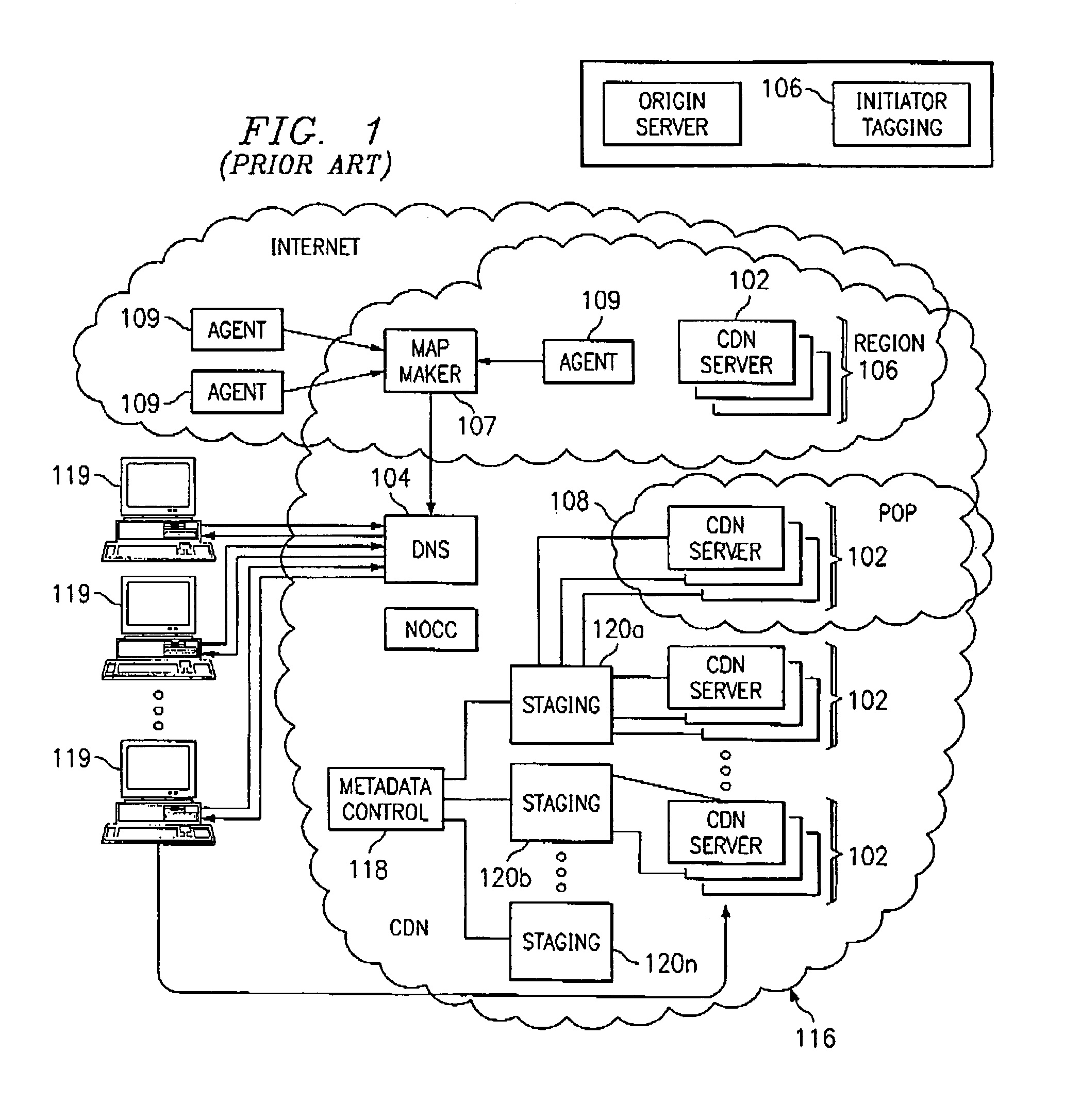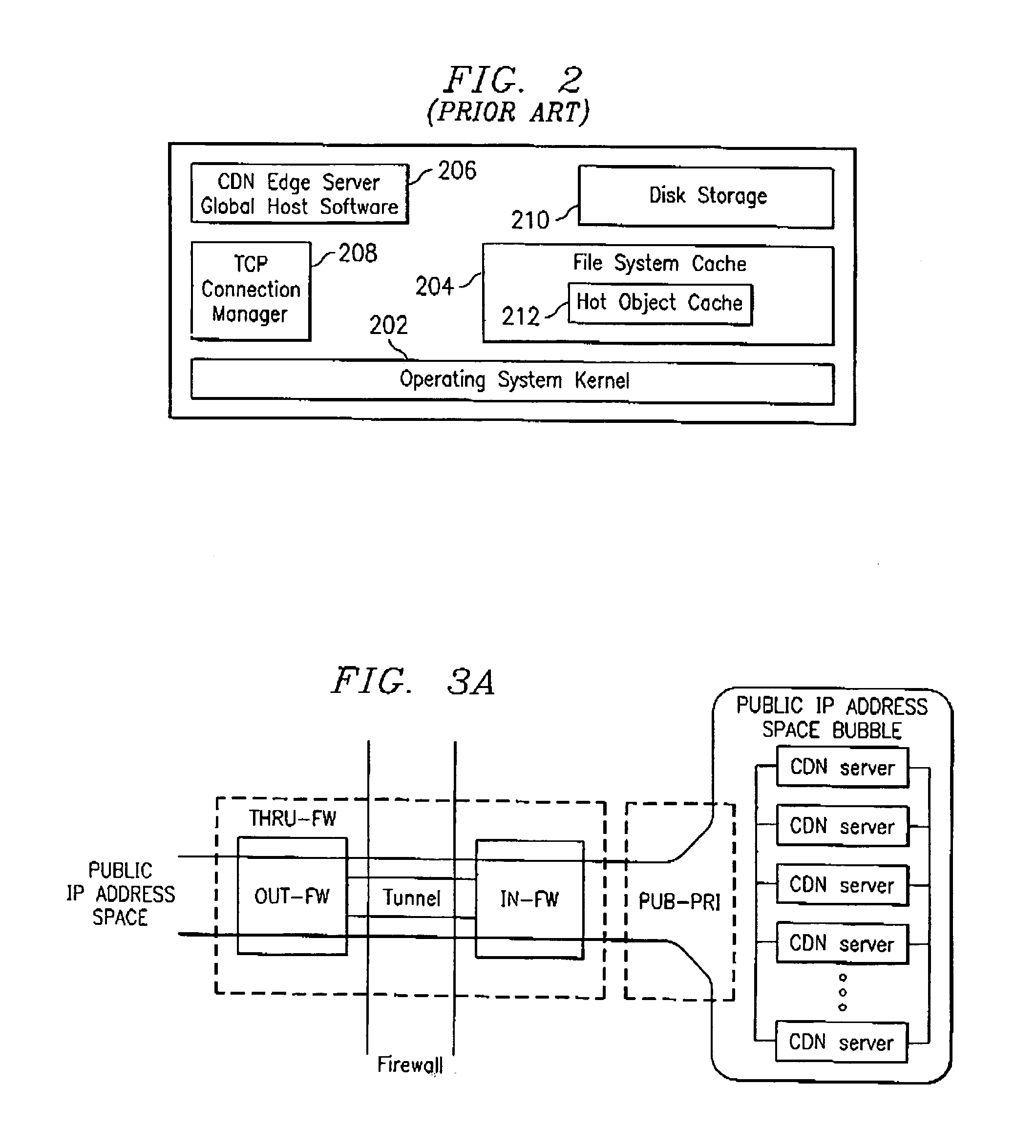Extending an Internet content delivery network into an enterprise
a content delivery network and enterprise technology, applied in the field of enterprise content delivery networks, can solve the problems of large cost of providing good access, e.g., by building bigger networks and deploying and managing caching infrastructure, and achieve the effect of efficient and cost-effectiv
- Summary
- Abstract
- Description
- Claims
- Application Information
AI Technical Summary
Benefits of technology
Problems solved by technology
Method used
Image
Examples
first embodiment
[0036]FIG. 3 is the invention wherein an enterprise deploys ICDN-aware servers and distributes ICDN content from inside an enterprise local area network (LAN). The configuration of a single central office and a pair of remote offices is merely representative, of course. In this scenario, an enterprise desires to improve the performance of web sites that the CDNSP distributes on behalf of its content provider customers. To this end, the enterprise turns over to the CDNSP Domain Name Service (DNS) operations and the CDNSP preferably deploys a private CDN region at one or more of the remote offices of the enterprise. A region comprises one or more CDN servers, which are illustrated as ICDN-aware servers as these boxes act as surrogate origin servers for the normal publicly available ICDN content. ICDN mapping (using a request routing mechanism) connects users in a remote office with the local ICDN-aware servers, typically, those ICDN servers within the remote office nearest the request...
second embodiment
[0044]As noted above, FIG. 4 is the invention that illustrates the use of ICDN-aware ECDN servers. In this illustration, ECDN content requests are designated by the heavier weight arrows and ICDN content requests are designated by the lighter weight arrows. ECDN content and applications are delivered inside an enterprise firewall with traditional security methods. In this scenario, an enterprise wants to improve not only the performance of web sites that the ICDN delivers, but it also wants to improve the performance of intranet-delivered content. As in the previous scenario, the enterprise hands over DNS operations to the ICDN, the ICDN deploys an ICDN-aware region in each remote office, and the ICDN controls the regions as part of the ICDN network. To this end, the enterprise is given a domain, say home.foo.com, with a private map that only maps to regions inside of the firewall of the corporation.
[0045]Preferably, content on the intranet is tagged for delivery over the ICDN by kn...
third embodiment
[0046]FIG. 5 is the invention wherein an enterprise distributes intranet content and applications without deploying CDN servers inside the enterprise LAN. In this scenario, an enterprise wants to improve the performance of intranet content and applications for users in remote offices that are connected to the Internet. These remote offices may communicate with the central offices with a VPN, but typically there is no dedicated physical network between the offices. The enterprise may not want to deploy CDN servers in each of the regional offices because of space, cost, or other reasons. Instead, it is assumed the enterprise desires to utilize the CDN to serve the intranet content from an node that is located closest to the regional office. A machine located at a node of this type is illustrated in the drawing as being an ECDN-aware ICDN server as the server is a conventional surrogate origin server for serving ICDN content typically located at a public IP address. Generally, the ICDN...
PUM
 Login to View More
Login to View More Abstract
Description
Claims
Application Information
 Login to View More
Login to View More - R&D
- Intellectual Property
- Life Sciences
- Materials
- Tech Scout
- Unparalleled Data Quality
- Higher Quality Content
- 60% Fewer Hallucinations
Browse by: Latest US Patents, China's latest patents, Technical Efficacy Thesaurus, Application Domain, Technology Topic, Popular Technical Reports.
© 2025 PatSnap. All rights reserved.Legal|Privacy policy|Modern Slavery Act Transparency Statement|Sitemap|About US| Contact US: help@patsnap.com



